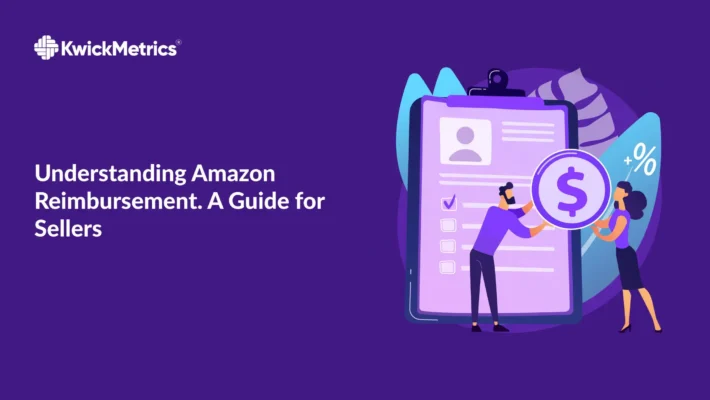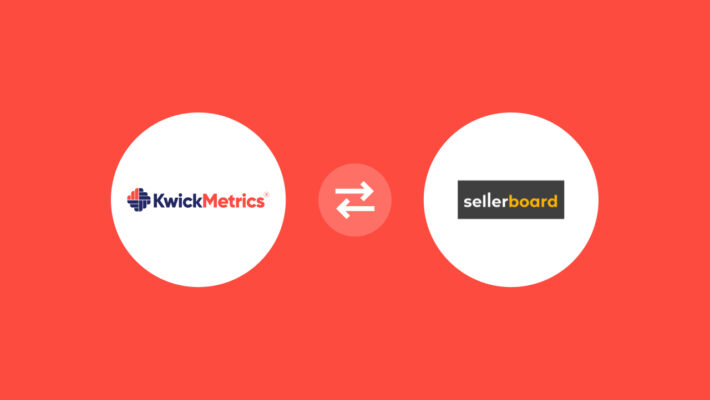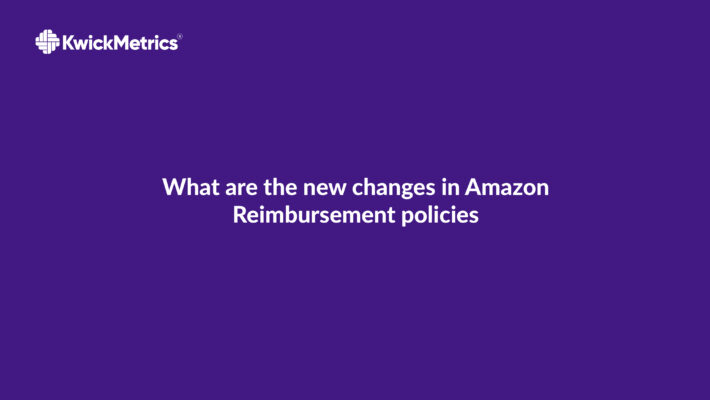Understanding Amazon Sales Metrics: An Interpretive Guide

Data is crucial to making good decisions, whether you are just getting started or have been in the business for a while. This is the only way to steer your business confidently. Making business decisions based on instincts is likely to lead you back to where you started.
When you are an Amazon marketplace seller, you need data that can increase sales and reduce those that impact your bottom line. You can leverage the Amazon seller central app to take your online selling business to the next level by getting information and metrics right in your hand.
Let’s dive into Amazon sales metrics.
Whether you sell solely on Amazon or across multiple channels, keeping track of your metrics is critical for long-term success. How else will you know what is working, what is not, and what ultimately drives your profitability?
Every ecommerce seller knows the rule – utilize your data to increase sales. However, with so many metrics to track, it can be difficult to know which one to focus on and improve.
- Product ranking
- Seller rating
- Unit session performance rate
- Units ordered
- Order defect rate
- Inventory performance
- Fulfillment performance
- Fees
- Invoice defect rates
- Order defect rates
Product Ranking
In most cases, when users land on Amazon, they are there to shop and to take advantage of Amazon’s robust functionality. More than 75% of Amazon customers use its search box, though 40% don’t browse beyond the first page. Therefore, you need to optimize your product rankings so that you appear on page one of search results. To achieve the best results, aim for the Best Seller ranking. In order to determine the Best Seller rank, sales volume is used instead of seller reviews or customer feedback. Get a head start on selling since they are updated hourly as well!
Having a high traffic volume but a low conversion rate for your Amazon products may be a sign that your pricing strategy needs to be reviewed. It only takes a few dollars to gain that Best Seller ranking on Amazon, since product comparison is so straightforward.
KwickMetrics - The Business Intelligence and Analytics Tool
Explore 14-day free trial! No credit card required, cancel at any time.
Seller Rating
By combining metrics from customer feedback, fulfillment, and more, Amazon’s Seller Rating provides a more objective measure of your performance. There are six major metrics included in the Seller Rating, which ranges from 0-100.
- Shipping time
- Order cancellations
- Chargebacks
- Customer inquiries
- Customer reviews
- A-to-Z Guarantee claims
Tracking your Seller Rating will enable you to stay on top of the big picture and improve your business.
Unit Session Percentage Rate
The conversion rate on Amazon’s platform is simply called conversion rate. Amazon’s average unit session percentage rate is 12.3%. In calculating unit session percentage rate, the number of units ordered is divided by the total number of sessions. Take a closer look at both units ordered and your sessions to determine how you can improve this conversion rate. It could be low because of low sales or low traffic.
Units Ordered
You can measure how effective your Amazon presence is by looking at how many units you order on a daily, weekly, and monthly basis.
Many Amazon customers will order multiple units in a single purchase, so this is a better metric than your total orders. Approximately two products are included in the average Amazon order.
When it comes to profitability, increasing multi-unit orders makes sense. The overall variable expenses of a seller who processes and ships two units are generally lower than if it had sold one. In addition to more than doubling the total net income, the net income per unit also increased.
Order Defect Rate
You can find your Order Defect Rate alongside your Seller Rating, but it focuses on the specific order itself. Is it defective or successful? Amazon considers an order defective if:
- Makes an A-to-Z Guarantee claim,
- Makes a chargeback, or
- Leaves negative feedback (1- or 2-stars).
If your seller account is suspended or warned due to a defect rate of 1% or more, Amazon may issue you a warning.
Inventory Performance
Amazon’s Inventory Performance Index is one of its newest metrics. The problem is especially acute for FBA sellers, who rely on Amazon storage. Sellers with low Inventory Performance are limited in the amount of storage they can use.
There are three suggestions for increasing Amazon’s score (which ranges from 0-1,000): decrease excess inventory, update your inventory, and avoid stranded inventory.
Fulfillment Performance
It is a relatively new metric from Amazon designed to keep sellers accountable for their fulfillment performance.
Unlike seller ratings, fulfillment performance is based on hard data such as order defects, late shipments, and pre-fulfillment cancellations. In order to meet Amazon’s fulfillment standards, all Amazon sellers should strive to maintain a high level of customer service.
Here are the numbers:
- Less than 1 per cent order defect rate
- Less than 2.5 per cent pre-fulfilment cancel rate
- Less than 4 per cent late shipment rate
Fees
There is a cost associated with using Amazon’s powerful and far-reaching platform. Selling on the platform might be worth it if you track your fees in relation to your revenue.
Amazon seller fees (to join Amazon’s seller program) and Amazon fulfillment fees (to join the FBA program).
Even though fees aren’t exact metrics, they are an important way to determine how profitable each order, customer, and product is.
Invoice Defect Rate
As a percentage of total Amazon Business orders, the Invoice Defect Rate (IDR) represents all orders for which an invoice was not uploaded within one business day after shipment. A business customer of Amazon expects to receive an invoice for tax and accounting purposes
To maintain a good customer experience, sellers should maintain an IDR under 5%; however, there are no penalties for failing to meet this target.
Why Automate Amazon Sales Metrics With KwickMetrics?
With your Amazon business, you’ve got plenty to worry about, so let KwickMetrics handle your Amazon seller account for you. KwickMetrics will provide Amazon sellers with next-generation analytics and performance measurement to understand business insights and generate insights to make informed decisions. Your selling app syncs with the app that analyzes and reports data in real time. You can access a full suite of Amazon seller analytics and gain better control over your business with it. Using this tool, you can get an overview of sales statistics, ranking, inventory planning, forecasting, and financials.


